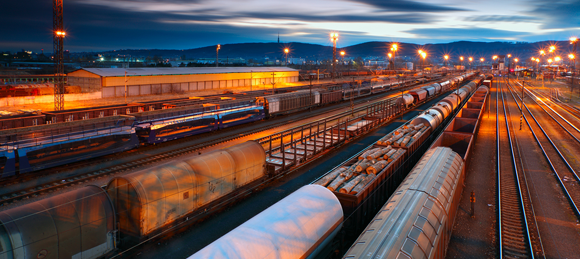Service functions
-
Download center
-
Add to My Report
-
My Report (0)
-
Print this Page
-
Download in PDF
-
Share
-
Feedback
-
Interactive analysis
-
Browsing history
-
Offline version
-
Company in soc.networks
-
Compared to 2011
-
Popular pages
-
Company on the map
-
Compact view
| Enter e-mail recipient * | Your e-mail * | Comment : | |
| * required fields | |||
Development of logistics activities

The common railway space in the economic sense, which is formed by Russia, Belarus and Kazakhstan, extends from the Asia-Pacific region to the borders of the European Union. The Holding Company aims to become become the logistics market leader in the “Space 1520”.
JSC “Russian Railways” already has strategic advantages for such a transformation, including its control of significant assets of JSC “First Freight Company”, JSC “TransContainer”, and JSC “Russian Railways Logistics.” The GEFCO integration into the Holding Company “Russian Railways” will also ensure the competitiveness of the Holding Company compared with the logistics divisions of the largest carriers along the East — West transcontinental corridor. In addition to the significant experience and technological developments in the field of design, building and management of terminal complexes, as well as supply chain and commodity stocks, the operator also owns a sales network spanning both ends of the transit corridor in Europe and China.
Establishment of the Customs Union (CU) and the formation of the Common Economic Space (CES) between the Russian Federation and the Republic of Belarus and the Republic of Kazakhstan opens new opportunities for the development of transit traffic services and will contribute to the growth of competitiveness of transit transportation across Russia.
- The objectives for the period 2015:
- Deploy network terminals and logistics complexes across the whole of Russia’s railways system.
- Increase the efficiency of the existing terminal and warehouse infrastructure (complexes and freight yards).
- Continue with the development of the (3PL) logistics contract.
- Create conditions for growth in container traffic.
- Improve the quality of information services for cargo owners.
Customs control is now transferred to the external border of the Customs Union (CU). As a result, the number of customs operations has decreased and delivery time of goods across CU member states has reduced by one to two days. Accordingly, logistics costs have decreased. Further simplification of customs inspection procedures and the definition of the rules of electronic interaction between the participants of foreign economic activity will attract additional transit freight flows.
The organization of non-stop rail transit through the Customs Union will increase the efficiency of the use of the existing transport infrastructure and reduce the burden on businesses by increasing the share of outsourcing and the creation of additional integrated value-added services.
The Joint Transport and Logistics Company created by the railways of three countries (see page 86) is expected to become a strong player across all Common Economic Space (CES) territories of Russia, Belarus, Kazakhstan, and adjacent countries.
To realize the potential of the transit corridor a number of systemic problems need to be solved, at the very least the eilimantion of differences in the regulatory framework applied to the transport activities in the participating countries and the reaching of an agreement on transportation tariff regulation.
JSC "Russian Railways takes an active part in the development process of a coherent transport policy based on the common understanding of the CES member states on the objectives and tasks of the transport complexes, and mechanisms for their performance.
 Address of the President
Address of the President
 175th Anniversary of Russian Railways
175th Anniversary of Russian Railways
 Analysis
Analysis
 Save Key Indicators to XLS
Save Key Indicators to XLS
 Transport Development Strategy
Transport Development Strategy
 Investment Activity
Investment Activity
 Download Chapter Financial and Economic Performance
Download Chapter Financial and Economic Performance
 Rating
Rating
 Loan Portfolio
Loan Portfolio
 Management System
Management System
 Governing Structure Of JSC Russian Railways
Governing Structure Of JSC Russian Railways
 Personnel management
Personnel management
 Housing policy
Housing policy